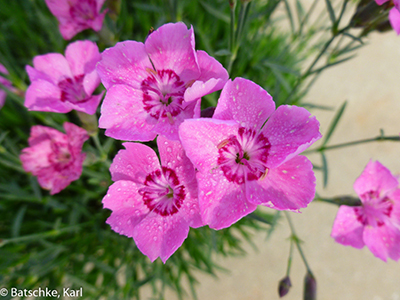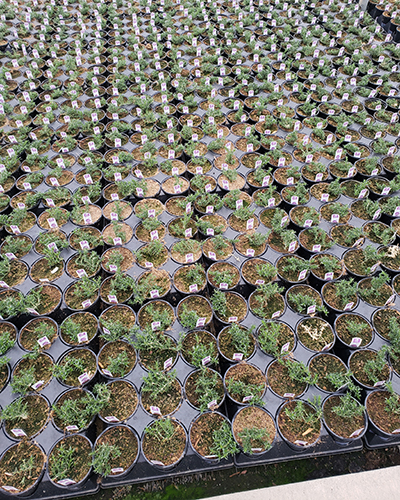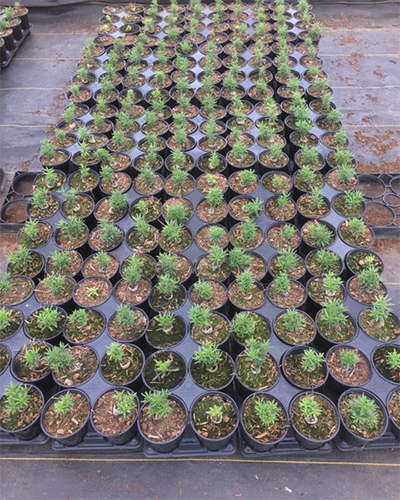Notes From The Road: Fall-Planted Perennials
I visited several customers last fall who were fall-planting their perennials. Personally I have always preferred a spring-planted program from either a cold treated liner or an active, first-year flowering plug. I feel that it’s much easier to schedule for flowering. The two primary reasons I have heard for fall planting are 1) Space is available, and 2) Labor is available. Agreed.
Plus, fall-planted perennials can result in a better quality finished product.
Here are some of my tips for a successful program:

Give your crop plenty of time to bulk up and mature.
This would mean planting in July and August in the north, and into September in the south. The key is to take advantage of summer temperature, light levels and photoperiod to develop a strong root system and a full canopy. Crops such as Phlox subulata, Dianthus or Salvia should completely cover the pot. Iberis should have 2 or more pinches for more branching and stronger flowering

Phlox subulata too small for end of October.
Overwintering.
It is best to overwinter in a heated greenhouse. Gradually reduce the temperature to just above freezing by December. Cool as necessary during the day to keep it below 40°F. White poly or shading materials can help reduce thermal gain. Crops can also be covered with frost cloth or overwintering fabric to help keep them cold.
As the foliage begins to die back, apply a broad spectrum fungicide to protect against crown and root rots. Excessive foliage may be removed after it dies back.

Iberis too small for mid-October.
If overwintering in an unheated greenhouse or outside, cover the crop securely with overwintering fabric. This will help protect against temperature extremes. Monitor for water, botrytis and rodent activity regularly. Treat as necessary. Avoid freeze/thaw cycles! This can contribute significantly to overwintering losses.
Forcing for spring.
If your perennials are in a heated greenhouse, remove all coverings when you are ready for forcing or when you are no longer able to keep them dormant because of natural conditions. For best success getting perennials out of dormancy, I have found that quicker is better. Allow the days to warm to 70-75°F and heat at night as warm as possible given fuel costs. Even up to 65-70°F. Once the roots and shoots are active temperatures can be dropped to control the growth and flower development.
If your perennials are outside you will need to monitor crops for signs of growth and remove the covering when necessary. However, given the temperature swings and extremes we have all experienced at times, you should be prepared to cover and uncover the crop with either frost cloth or heavier fabric, if it doesn’t damage the crop.
Please remember that these recommendations are very general. One of my bigger adaptations this past six months with Darwin Perennials is understanding perennial production on a regional basis and not just in my Midwest backyard. And keep in mind that your Darwin Perennials team is always available to help you with the details of your perennial program.